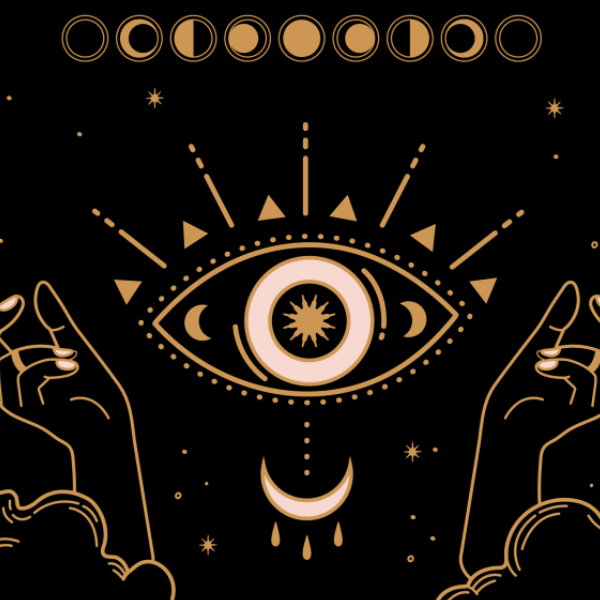
Principles of Spiritual Astrology
Spiritual astrology interprets planetary and stellar symbols as a map on an individual's path of spiritual development. Like transpersonal psychology, it explores unconscious and beyond-conscious realms, as well as mystical experiences. This approach integrates modern psychological theories with mystical teachings; astrology serves as a guide for one to realize their spiritual transformation and divine nature.
On astrologist forums, spiritual astrology is often emphasized as a guide to understanding one’s life purpose, soul journey, and karmic lessons. Indeed, astrology supports conscious evolution: spiritual growth is not only measured by external success but also by internal awareness and confronting our “shadows.” Planetary transits illuminate these shadows, offering individuals opportunities for higher levels of consciousness.
According to Carl Jung’s process of “individuation,” humans strive to reach universal archetypes beyond the personal self. In spiritual astrology, the natal chart symbolizes these archetypal potentials; as one interprets the chart themes with spiritual wisdom, they move closer to inner wholeness. For example, astrologer Dane Rudhyar introduced the term “transpersonal” in the 1930s, highlighting this spiritual connection between astrology and psychology. Rudhyar and his followers approached astrology not just as a marker of fate, but as a tool of spiritual guidance.
In astrology, the Lunar Nodes (North and South) are key indicators of the soul’s journey. The North Node points to the lessons and spiritual goals to be learned in this lifetime, while the South Node represents karmic baggage carried over from past lives. These concepts parallel principles in transpersonal psychology and invite individuals to reconnect with their inner guidance.
In spiritual astrology consultations, the individual is accepted as they are, and their belief patterns are explored. Questions like “Why can’t we realize our divine nature?” are posed to uncover self-imposed barriers. The goal is to help the person undergo an inner transformation, freeing them from egoic programs and enabling them to discover their true potential.
The astrological chart reveals the challenges, lessons, and potential you carry in life. An astrologer interprets the strengths and weaknesses, karmic history, and spiritual mission shown in your chart to help you reach a higher state of awareness. Ultimately, there is a strong link between astrology and spiritual growth, with the natal chart serving as a powerful guide on one’s spiritual journey.
Spiritual Evolution Through Planetary Energies
In astrology, planets symbolize both our personality traits and spiritual energies. Each planet has a unique spiritual theme and role. For example:
- Uranus: Personal freedom, sudden awakenings, and liberation from societal norms.
- Neptune: Spiritual quests, inspiration, and intuition (the ability to perceive truth).
- Saturn: Maturation, discipline, and karmic trials.
- Jupiter: Expansion, wisdom, and belief; it encourages spiritual growth.
- Pluto: Transformation, rebirth, and empowerment; it breaks down old patterns.
The positions of these planets in a birth chart can elevate a person's level of consciousness. Their transits, or movements across the sky, trigger these spiritual energies and initiate inner transformation. Difficult transits may bring major life upheavals, yet they hold the soul’s hidden leap. As Serap Koçman states, so-called “difficult” influences in astrology actually open doors to spiritual depth. For instance, a Saturn transit through a house brings challenges requiring maturity, discipline, and responsibility. Though temporary, these tests ultimately contribute to spiritual maturity.
In transpersonal astrology, planets are viewed as universal guides that lead individuals beyond personal boundaries. This perspective frames a person not just as a self, but as someone who integrates with the cosmos. Uranus encourages liberation through unexpected changes; Neptune dissolves illusions to promote spiritual enlightenment. Pluto triggers deep inner transformation and helps individuals leave behind their old selves. Indeed, during Pluto transits, one may shed their former identity and gain a higher level of self-awareness. Each planetary transit is thus interpreted as a step toward spiritual maturity.
Synastry and the Concept of Soulmates
In astrology, synastry involves comparing two birth charts to determine compatibility and points of conflict in a relationship. From a spiritual perspective, every relationship is a learning experience: relationships are among our greatest teachers, and a synastry chart reveals what each partner will learn from the other. This view suggests that each relationship offers an opportunity for two souls to explore their shared depths.
Challenging aspects in synastry, such as squares or oppositions, carry special meaning. They accelerate spiritual growth by “clearing ingrained karma.” Though uncomfortable at first, such aspects help individuals learn important life lessons more quickly. In short, the trials within a relationship foster personal growth and maturity.
The concept of a “soulmate” is not limited to romantic love. According to astrologers, soul companions may appear in the form of a parent, child, sibling, friend, or even an adversary. We share intuitive bonds with these individuals and fulfill karmic contracts together. In astrological analysis, strong compatibility, shared destiny themes, and unconditional ties between two charts are signs of soul-level connection. Ultimately, a soulmate is a companion on your life journey who reflects your truth and supports your evolution.
Didem’s Note:
“The mirror of your soul is in the sky; remember to look.”
